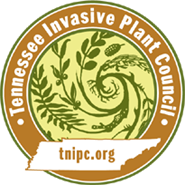Mentha spicata L.
Spearmint

Description
Stems
Spearmint stems are multiple from the base, stand erect, branch, and are 2-3 feet in height.
Leaves
Leaves are opposite in many pairs per stem with stalks 0 to 3 mm. Leaf blades are lance-ovate or elliptical, sharp-toothed and pointed. They are 2 to 7 cm long and 0.8 to 2.5 cm wide and dark green. Leaves have stiff hairs along main veins beneath.
Flowers
Pale lavender or white flowers grow in numerous whorls crowded in slender terminal spikes 3 to 12 cm long and 1 cm wide.
Fruit
Fruit consists of 4 small egg-shaped nutlets.
Images
Photo: Joseph M. DiTomaso, University of California, Bugwood.org
More images of Mentha spicataLife History
A perennial species of mint (Lamiaceae Family) native to Europe and Asia that’s found widely in North America,
Mentha spicata grows well in nearly any temperate climate. Spearmint can propagate by seed or creeping rhizomes.
Habitat
Spearmint prefers partial shade (though it grows fine in full sun) and moist loamy soil, such as along stream banks and other moist places.
Origin and Distribution
Because of a history of cultivation as an herb, Spearmint is found all across the United States.
Management Recommendations
Mechanical Control
Mowing does not control this plant. Manual pulling can be effective, but the plant often re-sprouts from underground runners.
Chemical Control
Using a glyphosate solution, spray leaves until they’re wet, but not dripping. It may require several applications to bring the plant under control. It can re-sprout from underground runners. Terbacil can be a successful herbicide, but treatment likely will be needed for several consecutive seasons.

